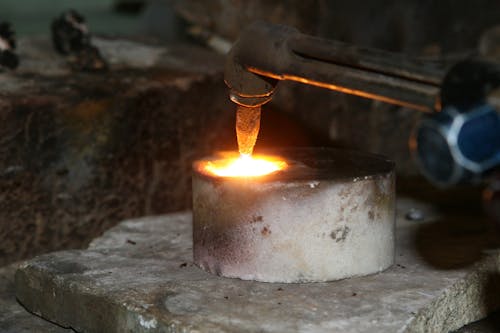In anodizing Market, metal anodizing had been estimated at US$ 757.51 Million in 2021, with a CAGR of 5.92% from 2022 to 2030. The black anodizing method is widely employed in mechanical design to finish the aluminum part’s surface. Black anodizing is often a two-step procedure that involves anodizing an aluminum component first, followed by a suitable dye to turn it black.
An aluminum component can get a functional or aesthetic black color while improving its wear and corrosion resistance by performing black anodizing. This technique is widely used to coat components for the aerospace and automotive sectors, but it can also be used on everyday items like furniture and appliances.
In this article, we will explore black anodizing, including its advantages, drawbacks, and common applications. Let’s start now!
An Overview of Anodizing
Aluminum oxide is formed on the surface of a metal by the electrochemical process of anodizing. This anodized layer is absorbed into the metal rather than being applied to the surface, so it won’t peel or chip. It becomes incredibly robust and strong because of the protective layer, which increases corrosion resistance.

Anodizing is the strictly controlled amplification of naturally occurring phenomena called oxidation. Aluminum is immersed in an acid electrolyte solution at extremely low temperatures, allowing connected electrodes to conduct electricity.
As a result, the hard coat surface has excellent performance. The metal is still porous, though, so if further processing or coloring is necessary, it can be done.
- Chromic Acid Anodize
- Sulfuric Acid Anodize
- Hardcoat Anodize
What Does “Black Anodizing Process” Mean?
Black anodizing is an electrolytic coloring procedure that turns the aluminum’s surface into a long-lasting black oxide anodizing finish. Black anodized aluminum produces a luxury appearance with powerful performance characteristics by anodizing and dyeing aluminum, then locking the color inside the pores of the anodic coating.
Aluminum that has been anodized has improved corrosion and wear resistance, and black anodized aluminum has the added advantage of effectively absorbing light and dissipating heat.
How Does Black Anodizing Work?
Anodizing is applied to an aluminum part as per conventional practice before being colored black through an anodic coating of semi-porous aluminum oxide. You can anodize aluminum black by following these procedures.
Anodizing
Aluminum is anodized and acts as the anode in the acid electrolyte bath. The process of anodizing causes the aluminum’s exterior layer to electrolytically convert, producing aluminum oxide.
In particular, the interaction of oxygen molecules with the aluminum surface in the bath during the flow of electric current results in the production of aluminum oxide. This oxide deposit coats the surface of the aluminum by penetrating the pores.
Dyeing
The aluminum component would have a semi-porous surface after anodization. These pores serve as a storage space for the black dye used in the black anodization process. Three different dyeing methods are used, including:
- Organic Dyeing
- Inorganic Dyeing
- Electrolytic Dyeing
The holes in the aluminum oxide component must be sealed during the last phase of the black anodizing procedure in order to contain the black dye. A nickel acetate or acid bath is used for sealing, which helps the coat harden. The process of hardening aids in preventing aluminum color from fading and bleeding.
Advantages of Black Anodized Aluminum
Black anodizing has advantages over normal anodizing, including better corrosion and wear resistance. However, there are a few extra distinct advantages to black anodizing that are detailed below:
Emissivity of Heat
Heat sinks and satellite components can both benefit from blackening aluminum parts to boost their emissivity.
No Exhalation
In a vacuum environment, black anodized parts do not outgas if they are adequately sealed after dyeing. This absence of outgassing helps safeguard delicate equipment, particularly delicate space-based electronics.
Color Fastness
Black anodized components have high color fastness, which means they usually keep their color when exposed to UV (ultraviolet) light, particularly if they are dyed with inorganic or metal salts.
Applications for Black Anodized Aluminum
Market Segments for Aluminum-Extruded Products
Aluminum metal in its natural form becomes aluminum oxide during anodizing. As a result, a new product with a more resilient and weatherproof surface finish was produced. It also gives a variety of options with the addition of a beautiful appearance. Applications for black anodized aluminum can be found in commercial, consumer, and industrial settings.
What Are the Differences Between Black Oxide Coating and Black Anodizing?
The debate between black anodizing and black oxide coating is common among companies, but which is superior? Let’s investigate both procedures.
Black oxide coating, sometimes referred to as blackening, is perfect for coating
- Ferrous materials
- Stainless steel
- Copper-based alloys
- Copper
- Zinc
- Silver solder
It affects metals with moderate resistance to corrosion, reduces light reflection, and enhances aesthetics. Black oxide coatings materials through a chemical process, as opposed to black anodizing. Depending on the temperature being used, there are three different black oxide coating techniques:
- Hot
- Mid-temperature
- Cold
Black anodizing, on the other hand, is an electrochemical procedure that helps to increase the beauty and toughness of aluminum. Metal surfaces become long-lastingly weather-resistant thanks to this technique. It is recommended to make sure all surfaces that undergo anodizing are dry, clean, and free of pollutants for the best results.
Conclusion
Black anodizing is a special procedure that electrochemically colors aluminum black. It offers a sturdy, corrosion- and weather-resistant black matte surface that is also appealing.
Black anodizing is appropriate for a variety of constructional, industrial, and consumer uses where aluminum components need a visually beautiful black coating. The anodized layer also increases aluminum’s toughness and wear resistance.








